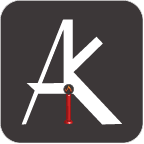How to Create Effective Print Media Designs
In today’s digital age, print media still holds a significant place in the world of graphic design. Whether it’s a brochure, flyer, poster, or business card, effective print media design can leave a lasting impression on your audience. Here’s a guide to creating impactful print media designs that resonate with your target audience.
Understanding the Basics
1. Know Your Audience Understanding your target audience is crucial. Are you designing for a corporate event, a local business, or a community project? Knowing who you are designing for will help you tailor your message and design elements to meet their needs and preferences.
2. Define Your Message What is the primary message you want to convey? Whether it’s promoting a product, announcing an event, or sharing information, your design should clearly communicate this message. Keep it concise and focused.
Key Elements of Effective Print Media Design
1. Strong Visual Hierarchy A well-structured visual hierarchy guides the viewer’s eye through the design, highlighting the most important elements first. Use size, color, and placement to create a clear path for the reader.
2. Typography Choose fonts that are legible and appropriate for the message. Combining different font styles can add interest, but be careful not to overdo it. Stick to two or three complementary fonts to maintain a clean and professional look.
3. Color Scheme Colors evoke emotions and can significantly impact the effectiveness of your design. Choose a color scheme that aligns with your brand and the message you want to convey. Use contrasting colors to highlight important information.
4. Imagery High-quality images can make your design more engaging and visually appealing. Ensure that the images you use are relevant to the message and of high resolution to avoid pixelation in print.
5. Whitespace Whitespace, or negative space, is the area around design elements. It helps to create a balanced and uncluttered look, making the design easier to read and more aesthetically pleasing.
Practical Tips for Print Media Design
1. Use a Grid System A grid system helps to organize your design elements and maintain consistency. It ensures that everything is aligned and spaced correctly, giving your design a professional look.
2. Pay Attention to Bleeds and Margins When designing for print, it’s essential to include bleeds and margins. Bleeds ensure that your design extends to the edge of the paper without any white borders, while margins prevent important elements from being cut off.
3. Proofread Thoroughly Typos and errors can undermine the professionalism of your design. Always proofread your text multiple times and consider having someone else review it as well.
4. Choose the Right Paper The type of paper you choose can affect the final look and feel of your print media. Consider factors like weight, texture, and finish to enhance the overall impact of your design.
5. Test Print Before finalizing your design, do a test print to check for any issues with color, alignment, or resolution. This step can save you from costly mistakes and ensure that the final product meets your expectations.
Conclusion
Creating effective print media designs requires a combination of creativity, technical skills, and attention to detail. By understanding your audience, defining your message, and focusing on key design elements, you can create print media that stands out and effectively communicates your message. Embrace the power of print media and let your designs make a lasting impression.



